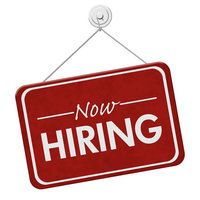6 Tips to Shorten Your Hiring Process
Finding the right employees for your dental practice can be a long, arduous process. But it doesn't have to be that way. You can shorten your timeline and find better candidates if you stick to these six steps.
Hiring the right employees can make the difference to your patients, to you, and to your budget. However, there’s a good chance you’re sick of your current hiring process taking months from start to finish. You need good people now, even though your hiring method typically takes up a lot of time and resources.
Streamlining your process can help attract talented individuals to your practice. Reexamining the way you engage and ultimately hire candidates can also help you reduce the costs and stress associated with hiring.
1. Consolidate your processes.
Your dental office might be big enough that you have two separate processes for hiring: one for internal candidates, one for external. However, having two hiring processes can double the amount of time it takes to find a qualified candidate. Try consolidating your process by having the entire hiring cycle managed by a single point of contact.
Your point of contact should be responsible for reviewing applications, looking at internal talent, and managing external candidate search procedures. With a single person, or team, performing these duties, the total amount of time it takes to hire someone could be cut drastically. Having specific people dedicated to this task also lowers the risk of miscommunication and can help to improve morale among internal job candidates.
2. Be sure you’ve got the right job description.
It’s important to accurately describe the job you’re hiring for when posting information about the position. If your description is vague or poorly worded, you might get candidates that are unqualified, or who think they’re applying for something different.
Cut down on wasted time by making sure your job description describes the responsibilities and duties of the position as accurately as possible. You can also be specific about what you’re looking for in a candidate, which can help to make it easier to recognize whether someone would be a good fit in your practice.

Target desired candidates.
If you happen to come across information about another dental professional who is seeking new employment, try reaching out to them directly instead of waiting on them to come to you. Sending a personal message to your target candidate can help you cut out the entire lead-in process by detailing the qualities you’re looking for in an applicant and how you believe a professional relationship might be beneficial to both parties.
4. Get decision-makers onboard early.
Maybe you’re in charge of hiring yourself, or you might be part of a group of people in the practice who must come together on all hiring decisions. Either way, you should directly involve the people who make hiring decisions early in the hiring process.
Getting office managers or other dentists to sign off on job descriptions as soon as possible means you can post them quickly. If you let your team know ahead of time that you’ll need them included on candidate interviews, they can make room in their schedules early to accommodate any interviews that are scheduled.
Frequent or extended delays in the hiring process can cause candidates to lose interest quickly. In an ideal situation, the first interview with a candidate should be scheduled within a week of first contact. Be sure to let each applicant know who they’ll be interviewing with, and how much time they should allow for the interview process.
5. Refine your interview technique.
To cut down on the amount of time you spend interviewing, try to schedule interviews with your most promising candidates before scheduling time with other, less-desirable professionals. If you’re holding a group interview, you can assign topics or practice areas for each interviewer to discuss with the candidates. Creating this kind of agenda can help your team ask relevant questions to capture a more complete picture of the person applying for the job. If you don’t have these guidelines in place, you might find your team asking different versions of the same question over and over again.
To avoid interview burnout, try to schedule one or two interviews a day, spending only an hour or two on the interview process each day. Some dentists clear their books for days at a time to interview candidates, but this causes stress and confusion when trying to rearrange patient appointments and other office duties.
6. Make an offer as soon as you know.
If you’re sure you’ve found the right person for the job, don’t wait to make them an offer. Dragging your feet while preparing a job offer might mean that your competitors get to the candidate first.
The faster you extend an offer of employment, the faster you can get your new hire into your practice and training for their new job. The best job candidates know they’re in high demand, and they won’t wait around forever. When you meet the right person for the job, don’t hesitate to send a job offer their way.
ACTIVA BioACTIVE Bulk Flow Marks Pulpdent’s First Major Product Release in 4 Years
December 12th 2024Next-generation bulk-fill dental restorative raises the standard of care for bulk-fill procedures by providing natural remineralization support, while also overcoming current bulk-fill limitations.